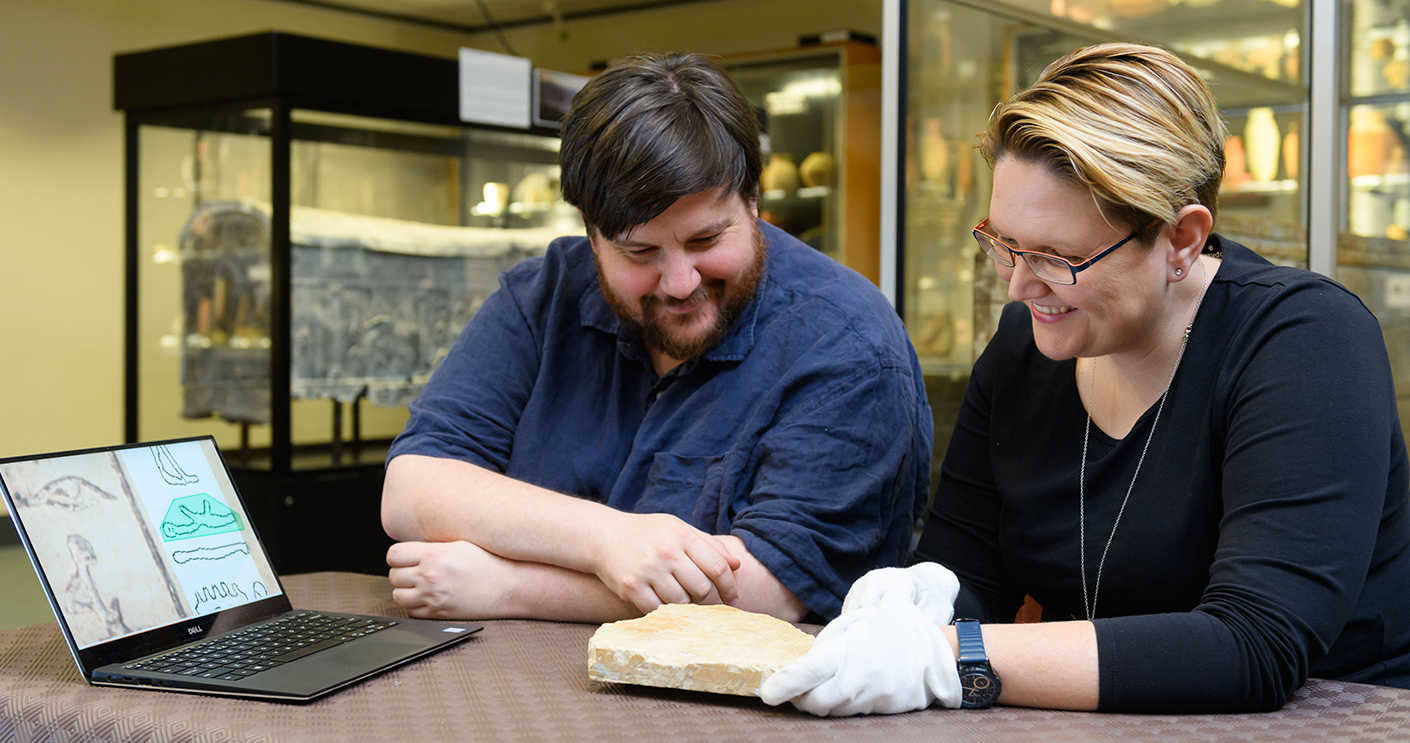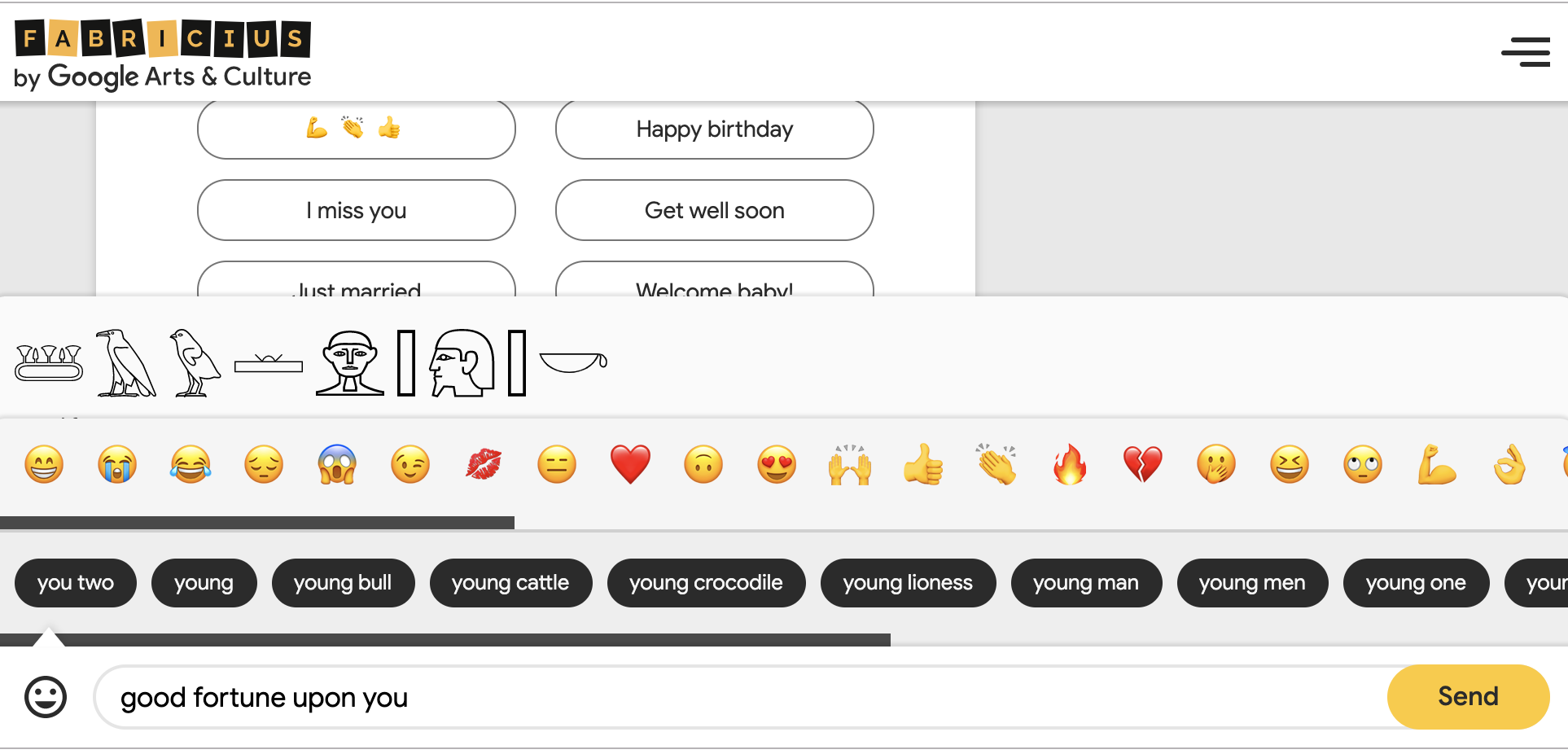Image: Dr Brian Ballsun-Stanton and Dr Alex Woods worked with Google and Ubisoft to marry ancient Egypt with the latest AI technology.
Corporate partnership at Macquarie is much more than a business arrangement. It’s about nurturing deep, long-term connections with the best of industry and then working together to create real-world solutions with impact. In this series we shine a light on successful projects being driven by Macquarie staff in partnership with leading companies and organisations.
Decoding hieroglyphs used to mean poring over stone tablets and dusty old textbooks. But a partnership between Macquarie’s Department of Ancient History and Google has led to the creation of an AI-powered interactive hieroglyph translation tool that brings Egyptology teaching and research into a new era.
Dr Alex Woods and Dr Brian Ballsun-Stanton from the Faculty of Arts explain.
About the project
The process of translating hieroglyphs has changed very little in the 220 years since the Rosetta Stone allowed us to decipher the ancient inscriptions. We originally started working with Ubisoft (makers of the Assassin’s Creed video games) in 2017 to explore the potential applications of machine learning in decoding hieroglyphs (‘How Assassin’s Creed triggered a world-first Egyptian hieroglyphics decoder‘)
This has since morphed into a partnership with Google Arts and Culture to build a tool to improve Egyptological epigraphy (the study of ancient inscriptions) by applying artificial intelligence to the process.
The key people
Dr Alex Woods from the Department of Ancient History provided Egyptological expertise and Dr Brian Ballsun-Stanton from the Faculty of Arts looked after the Digital Humanities and technological aspects. We were the academic expert advisors on the project, providing ongoing feedback during the development of the tool to ensure that Ubisoft and Google’s vision of ‘AI meets Egyptology’ was relevant to researchers and students.
The key corporate partners were Ubisoft, who wanted to apply their technological expertise to experiment with using AI to decode hieroglyphs, and Google Arts and Culture, whose mission is to preserve and make the world’s art and culture accessible online. We worked with their digital production company Psycle Interactive to make the tool.
We have also been working with Google as the first Australian university to have our culturally significant research featured on their platform (more on this in coming weeks!)
The (super cool) result
The Fabricus tool can be used in the classroom as an innovative way of teaching Ancient History students how to translate hieroglyphs, as it has the potential to help with suggesting possible translations using Artificial Intelligence based on glyphs students have outlined.
Researchers can generate facsimiles of tomb walls by uploading and tracing over photos in the app. This preserves the entire provenance of the work – from upload, to tracing, to transliteration all in a single file on the researcher’s computer.
The potential for sharing images of inscriptions and translations will connect Egyptology researchers across the world to others in their field.
And as a fun bonus, everyone can use the tool to send hieroglyphic messages to their friends!
Who else at Macquarie helped make it happen?
We would like to thank the Executive Dean of the Faculty of Arts, Professor Martina Möllering for her steadfast support of this project through all of its twists and turns. Without her support – and without the support of Neil Durrant, Faculty General Manager and Nick Galea, Faculty Engagement Manager – the negotiations and contracts would never have crossed the finish line.
How did you approach the management of the project? Any cultural or business process differences you had to navigate?
Academic time is different from industry time. Academics work in semesters or, if pressed, months. Industry time hops from focus to focus – so when we have their attention, they expect immediate turnarounds. Trying to reconcile the two cultures was a careful balancing act of all-nighters. It helped that we were very clear on what our objectives were and what deliverables were needed – as when the time came to work, we could set to with all engines firing.
What is your advice to staff that are thinking about partnering with industry?
The most interesting research can be that at the intersection of disciplines – as each has a different expectation of the world. Partnering with industry partners is a great way to exercise that interdisciplinarity, and forces us to consider entirely novel perspectives of the world. Our work with Google offers a new avenue for engagement in a way that amplifies our voices to an incredible level. At the same time, make sure everyone on the project is comfortable leaving their comfort zone as the questions, needs, outcomes, and timing of industry don’t always have a happy pigeonhole in academic work (or academic recognition).



 Back to homepage
Back to homepage
Comments
We encourage active and constructive debate through our comments section, but please remain respectful. Your first and last name will be published alongside your comment.
Comments will not be pre-moderated but any comments deemed to be offensive, obscene, intimidating, discriminatory or defamatory will be removed and further action may be taken where such conduct breaches University policy or standards. Please keep in mind that This Week is a public site and comments should not contain information that is confidential or commercial in confidence.